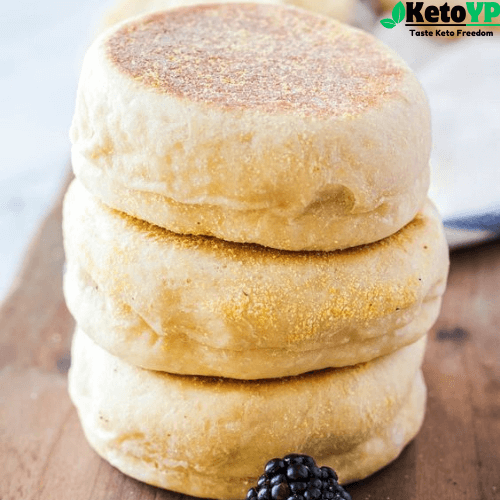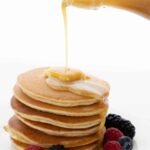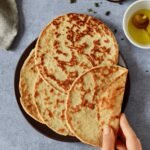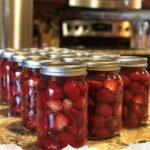Learn to make the most irresistible, soft and chewy English Muffins Recipe packed with delightful nooks and crannies! It’s an incredibly simple recipe, yet totally scrumptious. Smear butter or jam on them, or use them as a base for your favorite breakfast, such as eggs benedict-they’re that good!
English muffins are among my favorite dishes to prepare for breakfast. That’s whether I simply toast them with butter and jam or turn them into tasty breakfast sandwiches with sausage, bacon, or eggs. My recipe for English muffins is super easy, and you don’t have to be a baking pro to make them. They are soft, chewy, and packed full of flavor. Trust me, when you see how easy they are to prepare and realize how much more delicious they taste and are healthier compared with their store-bought friends, you will make them over and over again.
Check out my recipe tutorial below, which includes step-by-step photos, ingredient notes, and all my best tips! If you’re craving some more good breakfast ideas, don’t miss my Beignets and Lemon Poppy Seed Muffins.
What Creates the “Nooks and Crannies” in English Muffins?
For those of us who love English muffins, it’s all about those big pockets of air that make the lovely “nooks and crannies” inside that bread. If you’re like me, you enjoy slathering on butter, which seeps right into those pockets and makes for a comfortingly fine breakfast. In this recipe, the carbon dioxide bubbles, as they form during fermentation, contribute to the airy pockets.
The longer you leave your dough to rise, the better is the flavor you will develop in terms of bubbles in baked goods.
What you need to make this recipe
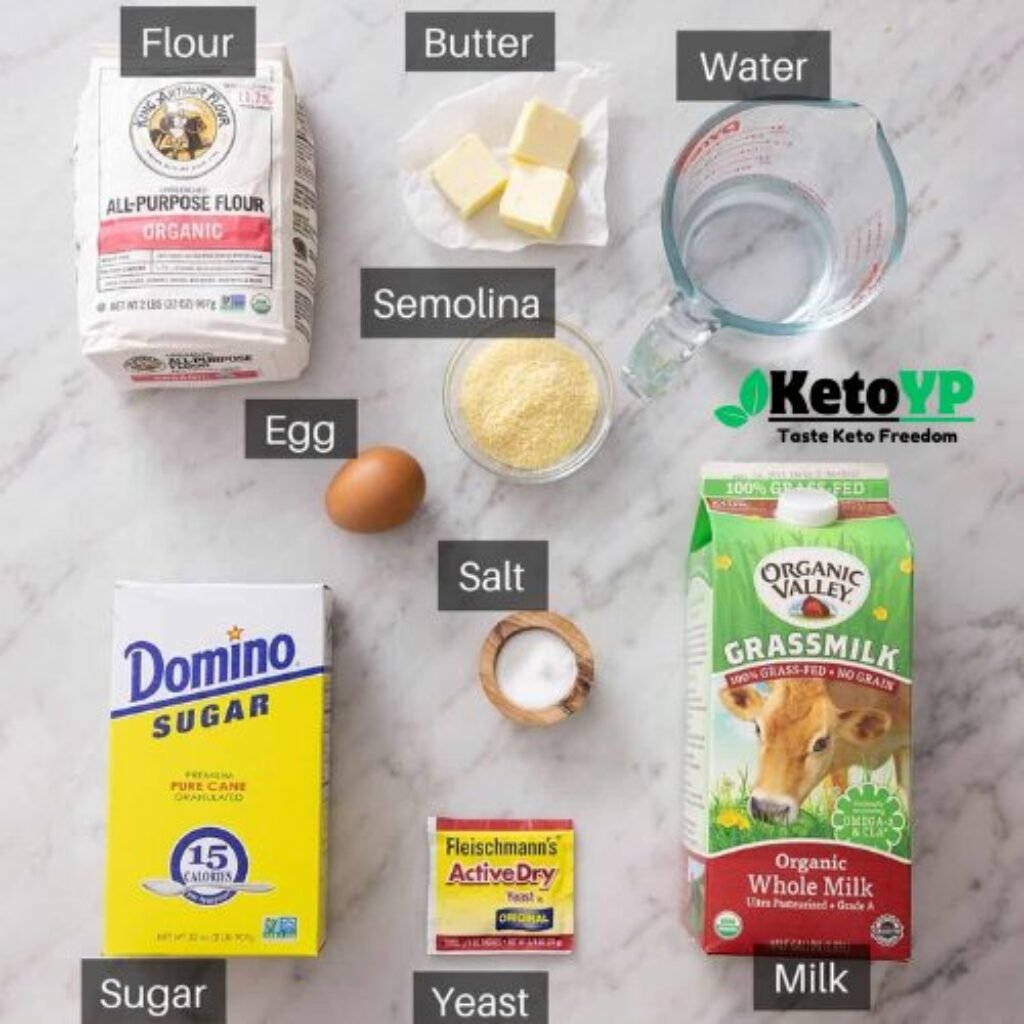
Flour: All-purpose flour is best for this recipe; no bread flour is used in this recipe.
Butter: Melted butter adds the flavors and creates those nooks and crannies that are great for texture.
Yeast: Either active dry or instant yeast can be made use of, but it first needs to be activated in the warm milk and water before adding.
Milk: Whole milk may be used, and indeed helps in the keeping of the muffins moist; low-fat or even dairy-free alternatives work also.
Sugar: Adds sweetness, helps activate the yeast. I do not recommend using brown sugar; it will alter the flavor.
Salt: The salt enhances all the flavors of the dough and is a vital seasoning of the dough.
Semolina: There’s a sprinkle of semolina or cornmeal on top of the English muffins before cooking.
How to make English Muffins

1.Mix the yeast into lukewarm milk, water, and sugar.
2.When frothy ie about 6-7 minutes mix it up with the egg and melted butter
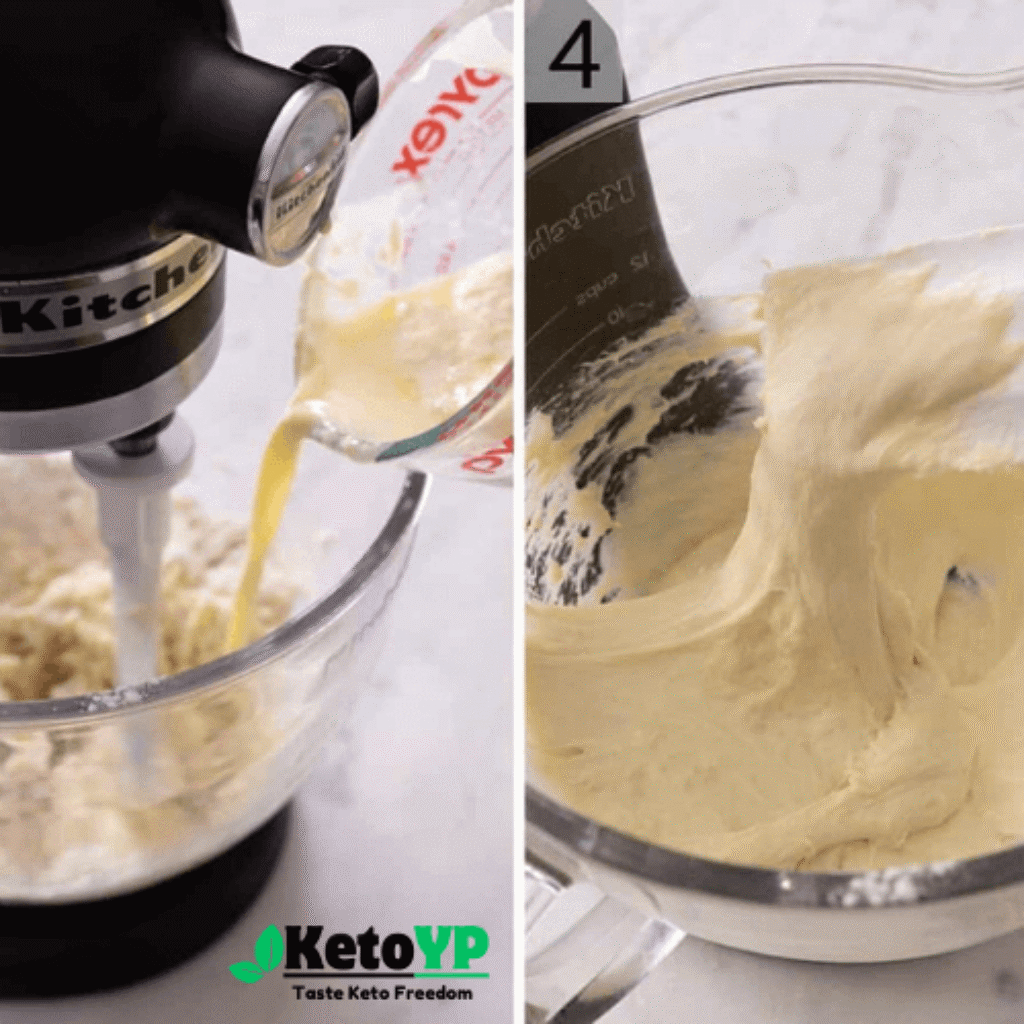
3.Mix the flour and the salt together in a stand mixer. Add the mixture of milk and yeast to this.
4.Knead until soft smooth dough comes, and place it in a big greased bowl and cover it until it doubles up in size.
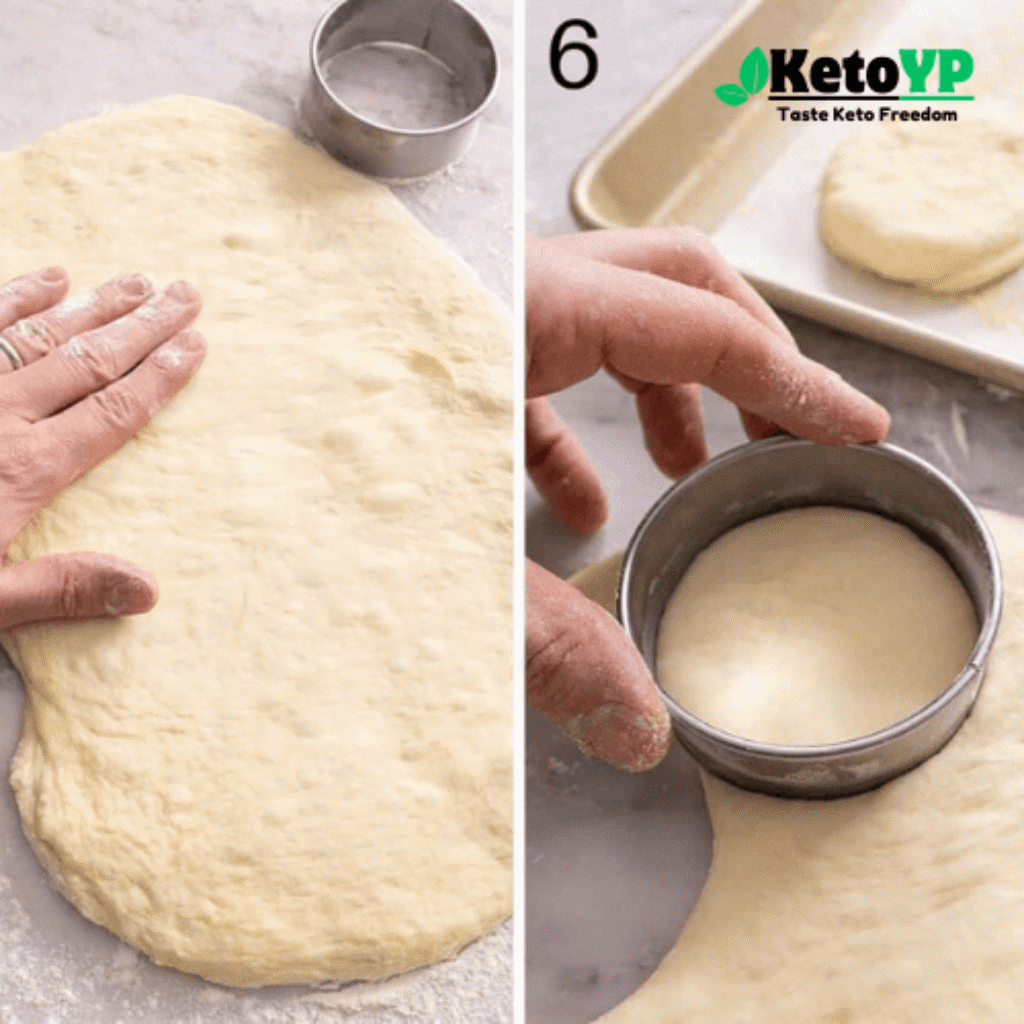
5.Roll the dough out to about 1 inch thick on a floured surface.
6.Use a 3-inch round cutter to cut out the English muffins.

7.Arrange the cut muffins, leaving about 1 inch of space between them, on a semolina-dusted baking sheet. Cover and allow to proof for about half an hour.
8.When done, cook the muffins on a hot skillet for 5-6 minutes on both sides.

Pro tips for making English Muffins Recipe
- If you want to get a feel, that’s okay, but the longer you can let the dough proof, the more flavor your muffins will have. You can do it just for 1 hour, but 4-8 hours will make them so much more flavorful.
- Let a stand mixer do the work. It really makes the dough very sticky and hard to work with otherwise.
- If you use bread flour instead of all-purpose flour, your muffins will be chewier.
- This will quicken the time on proofing but not directly under sunlight or extreme heat as this won’t serve well to the dough rising.
- For those not having a round cutter you can shape the dough by hand into rounds.
- I baked mine a little too soft in the center, still underbaked really, so in the oven at 350°F for a few minutes to firm them up they go.
- If the muffins are sticking to the pan, use a little butter.
- Cook muffins in a cast-iron skillet or griddle.
- This would have to be cooked in batches, so make sure to brush away excess semolina so it doesn’t burn.
- You can use a serrated knife to open up your muffin when you’re ready.
Frequently Asked Questions
Why is my dough so sticky?
The dough should be sticky-that’s what gives that classic nooks and crannies in English muffins Recipe!
Can I make these ahead of time?
Absolutely! You can mix all the dough and let it proof in the fridge overnight. Just bring it to room temp for about an hour before you continue on. Otherwise you can bake the English muffins and get them toasted when you’re ready.
What’s the best way to serve ‘English Muffins?
Good toasted with butter or jam for breakfast or a snack. Of course, they’re a requirement for Eggs Benedict and breakfast sandwiches (think McMuffin style), or with scrambled eggs and bacon.
How long do they last? Can I freeze ‘English Muffins Recipe?
Store them in an airtight container for 3-5 days. When they start to dry out, just toast ’em. You can freeze them, too, for up to 3 months—just thaw completely before serving.
Can I add mix-ins to the dough?
You can add herbs, cheese, or bacon bits to your English muffins for a little kick. However, do not load the dough because it can make the texture worst.
How do you store leftover muffins?
For any leftover muffins, store them in an airtight container at room temperature for a few days. If you want to hold on to them longer than that, you can freeze them, separating them with parchment paper in the freezer bag so they don’t stick together. Then just toast when you want to enjoy!
English Muffins Recipe
Course: BreakfastCuisine: English14
servings20
minutes10
minutes132
kcal1
hour20
minutesIngredients
2 3/4 cups all-purpose flour (330g)
2 1/4 tsp yeast instant or fast acting one package
1 teaspoon salt
2 tbsp sugar
3/4 cup milk (180ml)
1/2 cup water (120ml)
3 tablespoons butter (42g)
1 egg large, room temperature
cornmeal for dusting or Semolina
Directions
- In a bowl or glass measuring cup, combine the milk, water, and sugar; stir, then warm in the microwave to 110°F. Add the yeast and stir. Allow it to sit for 5-7 minutes until a foamy layer forms.
- While the yeast is activating, combine flour and salt in the bowl of your mixer and whisk together, then attach the paddle attachment.
- Add the egg and melted butter to the milk mixture. Pour this liquid slowly into the flour mixture by mixing on low speed.
- Gradually increase the mixer’s speed to medium-high level and mix for about 7 minutes until it becomes smooth and elastic.
- Knead the dough into a large greased bowl, and then place plastic wrap over the top. Place the bowl in a warm place to allow it to rise for about an hour, or until nearly doubled in size. You can also refrigerate the dough overnight if you wish; just be sure to take it out and let it warm for about an hour before using it.
- Turn the dough out onto a floured surface and very gently pat it down until it is just about an inch thick. Line two baking sheets with parchment and sprinkle them lightly with cornmeal or semolina.
- Using a 3-inch round cutter, cut out muffin shapes. Gently transfer to prepared baking sheets with a spatula or your hands. Roll out the remaining scraps and continue cutting. Cover loosely with plastic wrap and let rise in a warm spot for about 30 minutes.
- Fit the large skillet over low heat. When you can just about feel heat a few inches above the surface, sprinkle cornmeal or semolina over the skillet, and then place 3-4 muffins gently. Cover and cook for 5 to 6 minutes. Then flip over the muffins and again cook for 5 to 6 minutes.
- Clear out the old cornmeal from the pan, add a fresh sprinkle, and cook up the rest of the muffins. Warm and enjoy! If this is your first time making these muffins, just cooking one test muffin is a great idea to get the feel for how long to cook them.
Notes
- Even though the dough can be allowed to rise for only 1 hour, it will develop more flavor if you allow the yeast to have a longer activation period, between 4-8 hours.
Make use of a stand mixer for this recipe as the dough is very sticky and hard to handle.
Your muffins will be chewier when you choose to use bread flour instead of all-purpose flour.
Let the dough sit in a warm place but not directly exposed to direct sunlight or a heat source, as this can kill the rise.
If you do not have a round cutter you can accomplish what it is for without one since you can always shape the dough yourself.
If your muffins are so soft in the center they are underbaked, pop them back into a 350°F oven for about 3 minutes to salvage them that way.
If they are sticking in the pan, add a little bit of butter to the pan.
A cast-iron skillet or griddle is perfect to cook the muffins in.
The best plan is to cook them in batches, so brush off the excess semolina on each one so that they won’t burn.
When it is time to serve, you use a serrated knife to cut the muffins open.
It’s perfect when toasted, those English muffins.
Storage: Cooked English muffins may be kept fresh for 3 to 5 days in an airtight container, or frozen for up to 3 months.
Nutrition Facts
14 servings per container
- Amount Per ServingCalories132
- % Daily Value *
- Total Fat
3g
5%
- Saturated Fat 2g 10%
- Trans Fat 1g
- Cholesterol 8mg 3%
- Sodium 195mg 9%
- Potassium 63mg 2%
- Total Carbohydrate
22g
8%
- Dietary Fiber 1g 4%
- Sugars 2g
- Protein 4g 8%
- Vitamin C 1%
- Calcium 20%
- Iron 1%
* The % Daily Value tells you how much a nutrient in a serving of food contributes to a daily diet. 2,000 calories a day is used for general nutrition advice.

